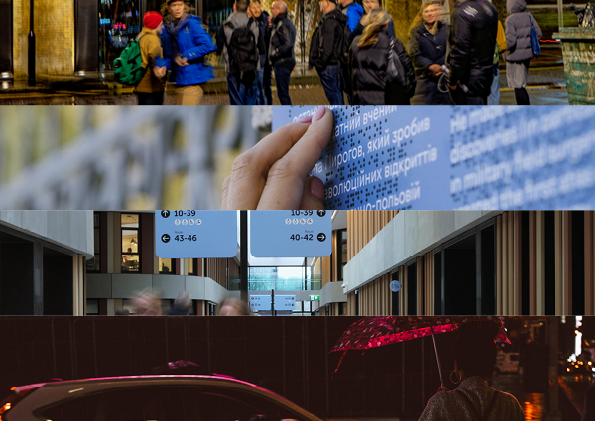
2023 brought another busy year for the Sign Design Society, with a rich mix of topics across talks and articles in the newsletters. As ever, we tried to get a balance of research and practice, offering diverse viewpoints and provocations.
We started the year with a particularly intriguing challenge for a panel discussion: ‘What can wayfinding design and environmental graphics do to make the built environment safer against gender-based violence?’ Our panel included designers, researchers, and campaigners and gave us perspectives and lived experiences from across the globe. Jaap Knevel, a speaker from later in the year, referred back to this panel discussion – it’s good to know that topics continue to reverberate after the event has finished.
During the year we heard from many designers across the world. Starting with Zaina Marvi and Luciana Matiello in the context of the panel discussion about gender-based violence. Zaina had also contributed the lead article for January’s newsletter discussing women and wayfinding in Karachi. This was followed by MoreInfo studio showing us how they continue to work even in the still-challenging environment of Ukraine. After this, we had an in-person event exploring f.r.a.’s work at Borough Yards, Southwark. The unfriendly weather was no match for the engagement of the audience and f.r.a., fresh from winning an award for this project, certainly weren’t going to let a little rain get in the way. After the super-local tour of Borough Yards, we went to the other end of the earth (virtually) to hear from Michel Verheem and his work in wayfinding in Australia, and beyond. We also heard from Sander Baumann and Robin Howie, talking about how their wayfinding work is informed by questions of sustainability and environmental impact. And finally, in a hybrid event, Doug Rose and Sean Brereton talked about wayfinding projects – for public transport and St James’ Quarter in Edinburgh. Also in this marathon event, we awarded three honorary memberships – to Sian Kelly, Colette Jeffrey, and Sandina Miller – for sterling work supporting the society. In the same event, Yasmin Garcia-Sterling introduced the work done by the Bartlett School of Architecture and its synergy with the Sign Design Society. And finally, we got a preview of the updated Sign Design Guide.
Coming from a research perspective, during the year, David Barrie told us about animal navigation and some of the range of skills that animals use to navigate. Back with humans, Hugo Spiers told us about the neuroscience that enables human wayfinding abilities. Ruth Dalton discussed the little-researched topic of how other people influence our wayfinding behaviour. Jaap Knevel explained his research into cultural difference and how this could inform the design of wayfinding information to possibly give us a greater range of design possibilities. This question of cultural difference had been picked up in Tania Raposo’s article for the September newsletter describing her work on a wayfinding typeface influenced by lettering in the environment in Portugal. And finally, Setha Low discussed her extensive ethnographic research into the use of public space to explain why public space is so important to society. This continued the discussion of placemaking prompted by Sapna Nundloll’s and Ryan Smolar’s articles on placemaking for the newsletter during the autumn. Other newsletters covered a wide range of topics including Evelyn Nuñez-Alayo’s account of introducing information design to her students in Peru.

Also, during the year, the SDS website unexpectedly broke, and did so in a way that was irretrievable. We have an interim website that doesn’t quite have all the functionality we need. Please continue to bear with us while we build the proper website.
We had also hoped to be celebrating the launch of the updated Sign Design Guide under its new title of Sign Design Guide +: a guide to designing inclusive wayfinding information. Publication has been delayed by a late hitch, but hopefully many of you saw the introduction to the new guide at the hybrid event in October. People attending in person also got to look through the sample copies that we have had printed. If all now goes according to plan, the new edition will be available as print copies early in the new year, and the digital edition will follow when we’ve ironed out the details of the best way to make it happen.
In the coming year, we’re looking forward to 2024 continuing our programme of diverse, engaging talks. They will be mainly online, but with a few in-person or hybrid events just to remind us that we have an existence beyond our screens. If you have any projects or other topics of interest, do please get in touch – we’re always keen to showcase the interesting work in either practical design or researchthat is going on. We’re also looking forward to having the website fully functional again.
See you in 2024!